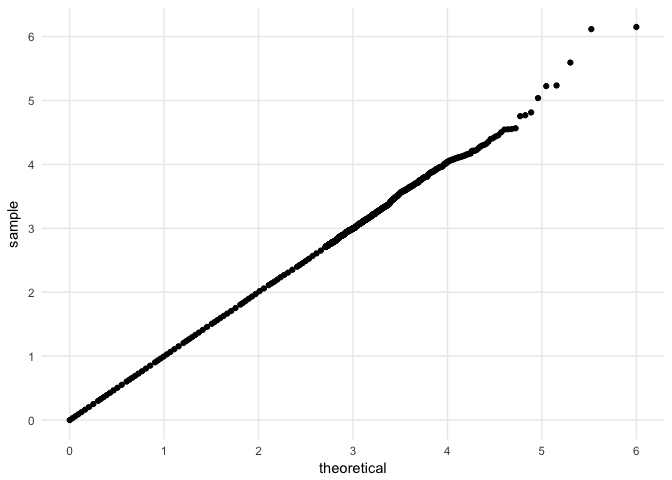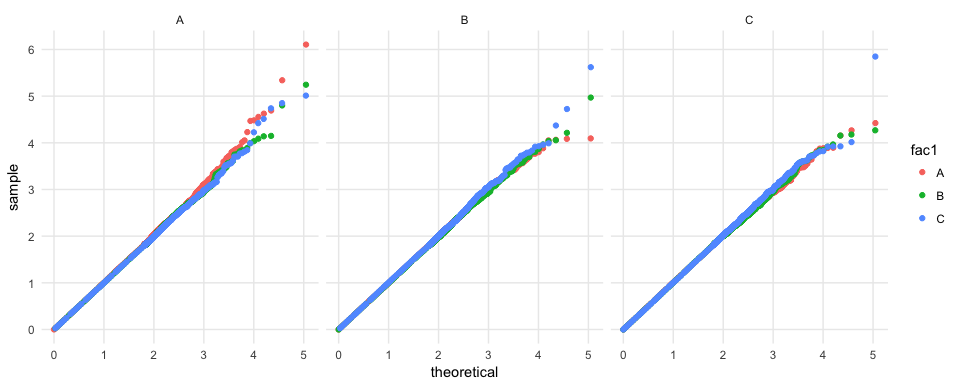
ggbigQQ extends ggplot2 to allow the user to make a
quantile-quantile plot with a big dataset. Specifically,
geom_big_qq uses all the data provided to calculate
quantiles, but drops points that would overplot before plotting.
In this way, the resultant figure maintains all the accuracy of a Q-Q
plot made with a large dataset, but renders as fast as one from a
smaller dataset and, when stored as a vector graphic, has the file size
of a Q-Q plot from a smaller dataset.
Here’s an example where geom_qq takes 14 seconds to
render the plot on my intel i5 and geom_big_qq takes 1
second to produce the same plot.
set.seed(27599)
d <- data.frame(s = runif(n = 5e5))
# # takes 14 seconds
# d %>%
# ggplot(mapping = aes(sample = s)) +
# geom_qq(distribution = qunif) +
# QQ_scale_x() +
# QQ_scale_y()
# takes 1 second
d %>%
ggplot(mapping = aes(sample = s)) +
geom_QQ_unif() +
scale_x_QQ() +
scale_y_QQ() +
theme_minimal()
This geom works with other aesthetics, too.
set.seed(27599)
n <- 5e5
d <- data.frame(fac1 = sample(x = LETTERS[1:3], size = n, replace = TRUE),
fac2 = sample(x = LETTERS[1:3], size = n, replace = TRUE),
s = runif(n = n))
# takes 1 second
d %>%
ggplot(mapping = aes(sample = s, color = fac1)) +
geom_QQ_unif() +
facet_wrap(~ fac2) +
scale_x_QQ() +
scale_y_QQ() +
theme_minimal()